[color-box color=”gray”][dropcap]Join[/dropcap] Canadian Expat, Dodie Schadlich, in her weekly column for “Off the Beaten Path”. Read on to hear about the true cost of free education in Ecuador and the hardships it can create for the local populations.. [/color-box]
Education In Ecuador
I believe that nothing in life is truly FREE and education in Ecuador is one of those many things.
My focus today is on the hardships and realities posed to these families with school-aged children each year. I would like to address some common misconceptions about the process as well. My only point of reference is coastal conditions. It is my understanding that the mountain schools have a different start date. My guess is the families are still required to supply the start-up materials, thus face the same dilemma.
The quality of education and services varies greatly from facility to facility so I am not comfortable making generalized statements as to what I feel may be lacking. Each educational experience can differ depending on: location, whether it is public or private, the quality of the neighbourhood it is located in, the number and quality of teachers and also the ability and intention of the Director (Principal) of any given school. Each variable can positively or negatively impact a child’s overall learning experience.
The country offers numerous private educational facilities that the wealthier families can choose from. As would be expected, they are often far better equipped in terms of services with more course options including English and computers. They also have their own lists of supplies to be purchased in addition to the tuition.
The majority of the population, however, relies on the free public school system.
As in other institutions, the education system is not immune to corruption concerns in how the allotted federal resources may be utilized. How, if, and when the funds and materials may be distributed are best left for another conversation and to be honest, as a foreigner I do not feel it is my position to comment too deeply on their system. My opinion means relatively little to the big machine. I choose to focus on solutions to help families with their immediate needs so the children have the best chance at receiving an education.
Understanding Costs
It is mandatory to send your child to school, however, the truth is many children simply do not finish their studies due to the annual initial cost of items required. The families I speak about tend to live on the outskirts of your vision, just off the beaten path. They make up a large number of the population of Ecuador and they are grateful if they can actually earn the minimum wage of approximately $360 monthly.
I had the great pleasure of getting to know a local family that had one child, Abigail. It would have been her first year of school in April/May of 2014. I asked her family member if Abigail was getting excited about going to school. The tone of the conversation changed, the head hung low and the response was; “She won’t be going this year.”
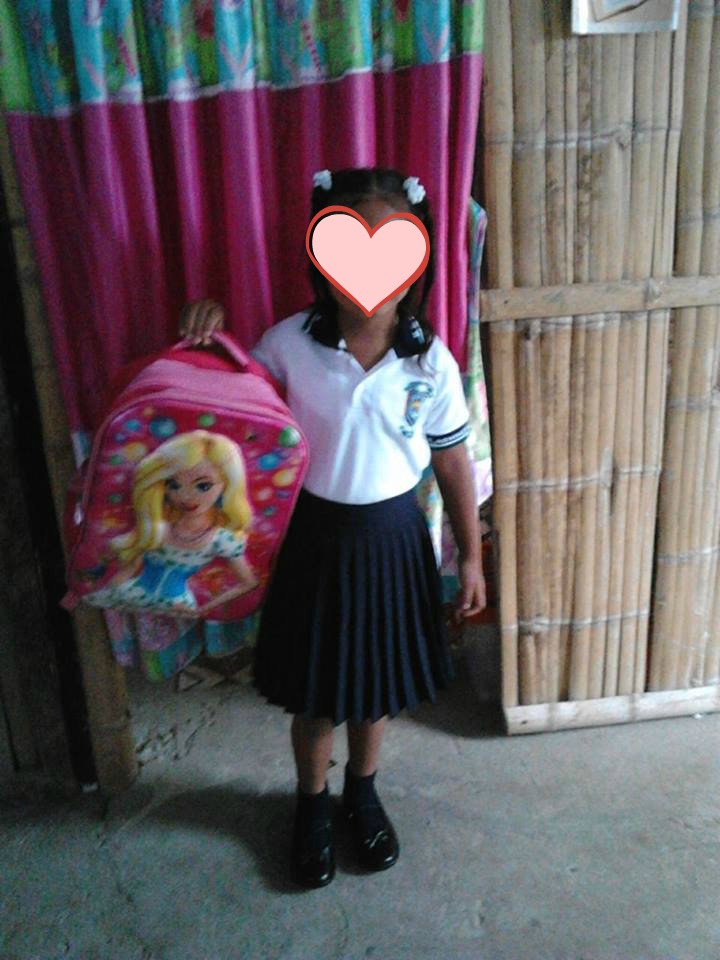
My Spanish skills were very caveman-like back in 2014. After I processed the information for a couple minutes; I repeated key phrases to ensure I understood what I was hearing.
So, this young girl was going to miss her first year of school because the family lacked $100 to buy stuff on a list. The immediate thought that flashed in my head was; “Nonsense, that simply can’t happen.”
Saving you all the little details, calls, and conversations that took place once the reality of what I had heard sunk in, I will skip directly to summarize that 6 children from 4 families received sponsors to help purchase the items for the 2014 year, including Abigail. Give or take we were able to collectively purchase a significant amount of items for $100 per child but it did not cover each and every item. It sure did help make a dent, though!
Making A Difference
The 2015 school year had 46 children with sponsors and 2016 had 52 children that received assistance. There were other people that started initiatives in their local areas and also individuals that reached out to workers and families near to them to offer assistance. The ripple effect was amazing to see.
This year is still a work in progress. On the coast, they return to school starting April 24 for high school students and more grade levels return daily through that week until the Kindergarten children finally return on May 1
At present we have 46 children sponsored; The families we work with are planning food sales to help supplement the costs so as a group more children will receive even partial assistance.
I will forever think of Abigail, as the spark that benefited many children and families over subsequent years go to school.
The Lists
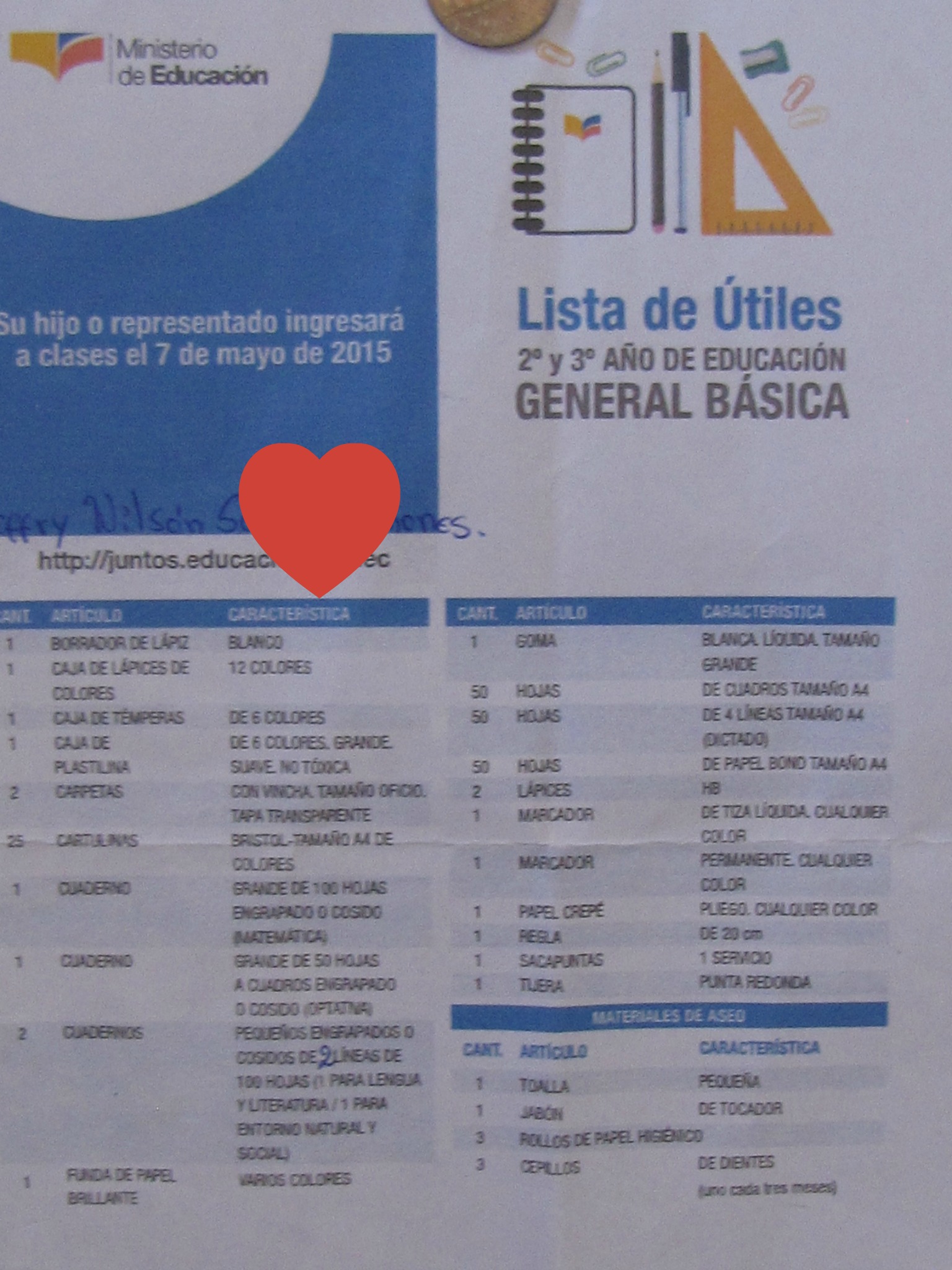
Regardless of school or age, there are some items that are similar across the grades like: notebooks, pens, pencils, coloured pencils, erasers, rulers, sharpener, printer paper and scissors to name a few. Once these common items are purchased, the differing items are far greater. The younger grades concentrate more on spelling booklets, glue, foamy type construction papers, coloured sprinkles, and Plasticine. The older grades include things like calculators, protractor/compass sets, and geometric rulers.
Another interesting part of the lists are the non-school related items listed under “Materiales de Aseo” (hygiene items) This may include any combination of toilet paper, hand soap, toothbrush and paste, hand towels, paper towels, combs or brushes to name just a few. The list pictured here from last year shows 3 rolls of toilet paper listed among many other things.
The Costs
The costs vary considerably depending on school and grade. Last year they averaged $43 for the group we purchased for; the highest being $67 and the lowest $28. These, of course, were the costs only for the stationary portion of the school lists and did not include a backpack to carry the items to and from school. It also did not include the “Materiales de Aseo”, which was outlined earlier where the price can range from zero up to an additional $10 per child depending on the hygiene items listed. This was also apart from uniforms.
Children require both a uniform and gym clothing to attend school. The uniforms consist of a nice white crisp shirts, coloured pants or skirts (each school has a colour they 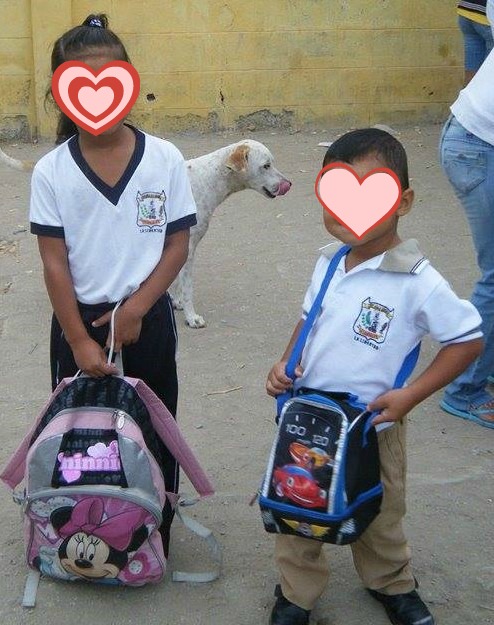
The gym clothes vary from crested shirts and blue sweat pants to gray matching sweatsuits. Both styles require the canvas sneakers; white for the girls and black for the boys.
Some Food For Thought
There are some misinformation, misconceptions that I would like to take some time to address. I have spoken to parents, teachers, and students multiple times since 2014 to reach an understanding of what they face. I try to learn from them directly. I find this minimizes the chances for misunderstandings.
[color-box color=”gray”]
1. Workers receive a Decima in April equivalent to one month’s wages to help with the school supplies: This means for minimum wage workers, with a contracted job, the employer must pay them at minimum an equivalent to a months salary. In theory, it is true, there is a law that states this. The reality is that many workers do not actually fall under this law as they are not employed under contract.
On the coast, these are the people with the corner food carts, the beach chair renters, the taxi drivers with their own vehicles, the vegetable stand owners, the meat-on-a-stick vendor, the booth worker at the souvenir stands and the man driving around with a load of pineapples in the back of his truck. It also includes the lady that cleans your apartment one day per week, that you and your friends share services with who is likely not under contract. Often the Mom & Pop restaurants have their family working and as a family run business they tend to keep it that way; again no extra months wage is passed to the workers. None of these listed workers are eligible for a Decima as they are self-employed. This list is not comprehensive and only addresses a few of the types of workers that do not fall under this law.
2. The government Education website states all children receive a uniform. Yes, it does say that, but the reality is they do not receive anything. I spoke to numerous parents in numerous schools on the peninsula about this and they disagreed fully with the web statement. They let me know they have never received free uniforms. What the website refers to is the gray suits for gym class but in reality, not everyone receives them either. Each school seems to distribute them in their own manner, or not at all. One school gives them, but only to very first-year students. Another school will give it out to everyone, but mid-year, not on the first day of school, meaning parents still need to supply this. A few parents actually sent questions through the website asking about this statement and never received a response that I am aware of.
3. Anything is better than nothing: The lists are very specific on what is required by each student in each grade, even down to the color of the notebooks and markers. There are many reasons for this and I do not believe it is for us to debate or change. To suggest that they should be happy with whatever the kids show up with is a slightly arrogant statement in my opinion. One parent, I spoke with related that it takes the focus off the differences. Everyone is dressed the same and shows up to class all with a red notebook for math (hypothetical). There are no social or financial class differences when appearances are all the same. If 3 students show up with neon flashing Barbie binders and the rest follow the recommendation of a red folder for math, the focus is taken away from the studies, the child then becomes the focus. The difference between the have and have nots bring up a feeling of envy and want. Also, there is the rationale of order and unity; like the military and police that all dress the same and carry the same type of weapons and do the same type of paperwork. There is a formality in their processes that must be respected regardless of our personal feelings towards it. To suggest they should be grateful to receive incorrect items as better than nothing shows a lack of knowledge for their culture and institutions.
4. To imply that the families can purchase what they need to go to school for $20 or $30 does a disservice to the families. To suggest that we, as North Americans can come here, step in and fix their hardship with $20 bucks, in my opinion, minimizes their struggles. Anyone who has lived here long enough understands the high costs for luxury or paper items. What North Americans can routinely pick up at the dollar store, costs significantly more here.
When I asked the parents about the possibility of buying what they need for this low price the reactions were priceless and met with either a laugh, shock or a dismissive negative head shake. They wished they received free uniforms, they wished they could buy all they need for $30 per child but the realities are far different.
Where a high school student list names a USB memory stick, a calculator, and a protractor set, in addition to the routine stationary items one can reasonably assess the true costs these families face. Particularly since single child families are the exception, not the norm.
Please do not misunderstand, the contributions of $10, $20 or $30 collective goes a long way to help reduce the burdens on these families. I just think we need to be mindful of what we say out there and how this is presented to ensure people understand this is not an easy time for these families and there are no easy fixes.
Put simply, be careful where you get your information from and what you repeat to others.
5. They cannot attend school without the items. This is not a true statement; it is mandatory to attend school in Ecuador. The question is then; What happens when you cannot afford to buy the necessary items?
I asked a mother, a student, and teacher for their insight to this question. None of these people know each other and all live in different areas of the peninsula.
The mother responded saying it causes much embarrassment for the family. The family, neighbors and church members will help each other as they can, with passing down uniform items or extra stationary items as they can. The teachers will continue to ask for the missing items and the parents will try to bring them in bit by bit. At times, they will stop going to the school as they do not want the confrontation. This may mean they will keep the children out of school until such a time that they can bring in a few items. This means that although the child is technically enrolled in school, they may miss many days as they try to avoid the conversation of the missing items.
The teacher responded specifically with: If they don’t bring all the necessary (items) they just watch while the others work.
The student responded saying he did not finish school because his family was very poor and he never had the items needed. He had to sit and not do the lessons many times. He felt embarrassed. He added that many times for gym class, he did not have the proper shoes so he was not allowed to participate. This caused him shame and finally, he stopped going. [/color-box]
Additional Information
On March 2015 I read in a “La nota original” ( www.eltelegrafo.com.ec) that the governmental provision orders that in no case the total expenditure between school materials, texts and uniforms may be greater than a minimum wage ($ 354).
In an article from El Universio on April 2016 it was discussed the full needs of students to attend school. One lady was quoted as paying nearly $300 for one child.
What Can You Do To Help
I think just being aware sometimes can be helpful. Just understanding someone’s pain, fear, and struggles; approaching with a smile and a hug can say to them that you understand this is not easy for them.
Maybe choose to tip a little extra this time of the year for those you know have school aged children. Let them know it is to help with their “Utilies Escolares.”
Speak to the guard of your building, the lady you buy your vegetables from; the person(s) you see each day and ask them how
many kids they have. If you have the means, ask them if you can help purchase some of the items on their child’s school list. They will be impressed that you even know about the school lists. If you are not comfortable handing them money, then ask for the list and go buy the items.
I would suggest helping those close to your geographic area for the best impact. So those of you in Cuenca and beyond, reach out to your locals and see what can be done. Work with them in coming up with ideas to earn income as a group. Find sponsors to help, get creative but remember to work with them, not above them.
If you would like to reach out to our group of children and families here on the coast, we would happily accept donations via PayPal to [email protected].
At the moment, we have 46 children sponsored with another 15 children that could really use some help.
For more information email me at [email protected].
I wanted to close with the little thank you note above from one of the children; it still brings a smile to my face.


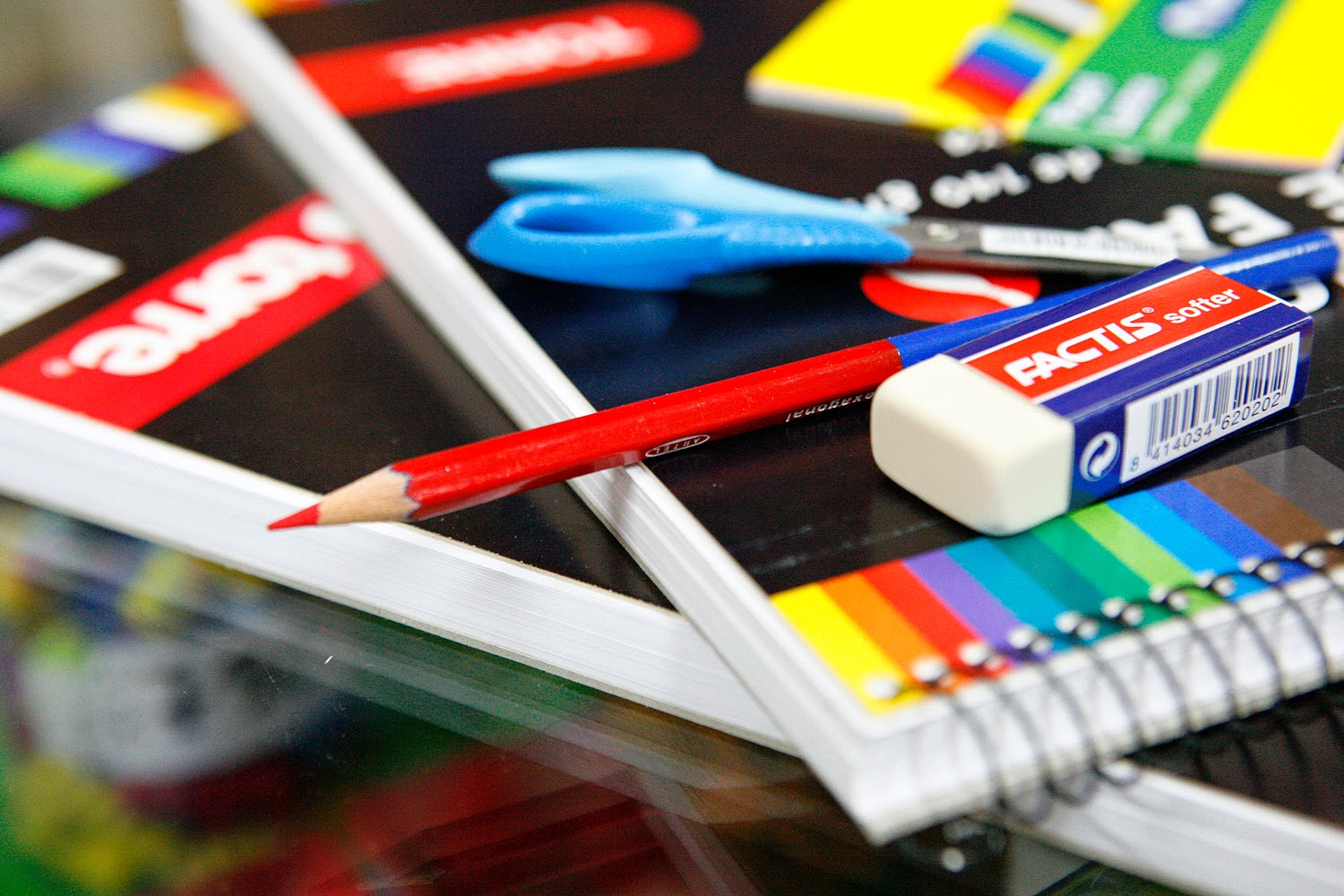



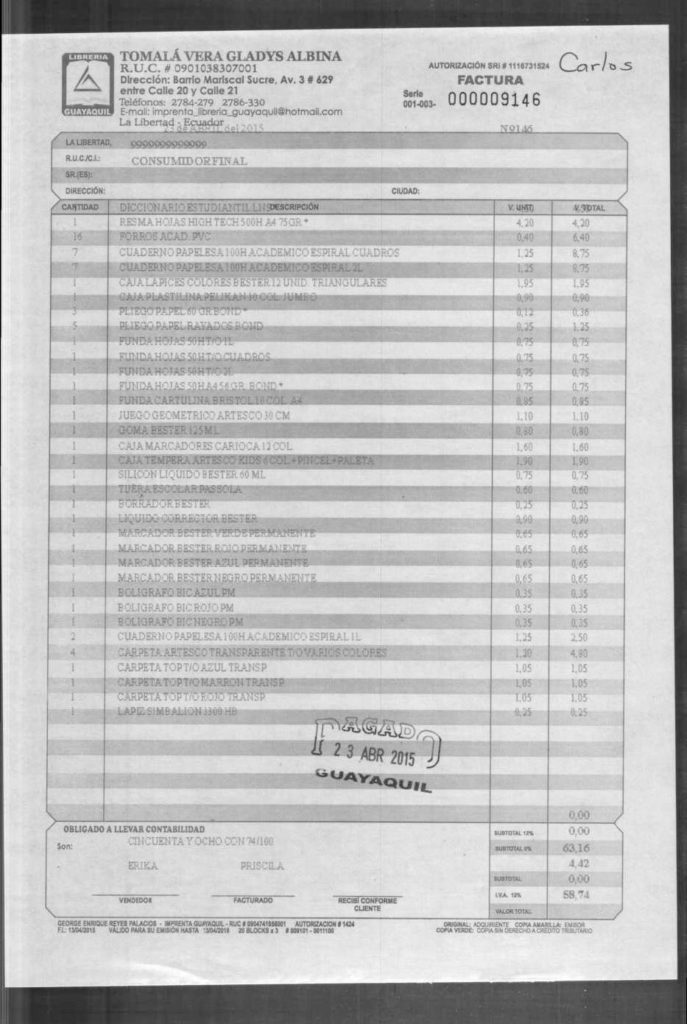
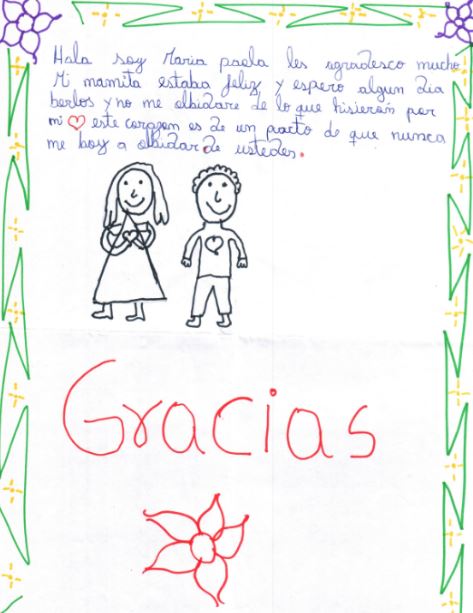
















14 Responses
I absolutely love your heart for the Ecuadorian people and your “can-do” attitude! Sharing the specifics of how to make a difference is very empowering. I live in Whitefish, Montana and look forward to your article every week!
Thanks so much! I am still wrapping my head around the whole- I am a writer – thing and your compliments are greatly appreciated.
It is refreshing to find a coherent “gringita” that doesn’t go to one extreme, “this place is the worst” or the other, “this is absolute paradise” and furthermore, does something effective to improve what is obviously in need of improvement.
Thank you very much.
Thanks so much . There are few things that are black and white. I am happier living in shades of gray, give / take, good /bad, hot/cold; together creating a balance, a place where we may not get all we want without first giving a bit. Maybe it is my Gemini but I can put up with the negatives around me in Ecuador best if I can see the positives within my reach as well.
My observation is that in order for a college student, he/she may have the opportunity to do what their heart desires as a career choice, because you are tested and directed into the jobs that the government feels is necessary!! If you want the “free” education…you must get the degrees THEY want! Otherwise…PAY for it!
I left out an important word….that the University may NOT be able to pursue their chosen interests….but have to accept studying a career not of their choice! That’s not freedom of choice if you are accepting “free education” and are steered into the governments direction!
This is interesting information. I personally have not seen this and I know some young people in university. I am sure they chose their own vocation and then chose the choose that offered the course. Perhaps I did not ask them the right questions but I will because this certainly is important. In fact I am speaking with a young lady that wants to pursue nursing and she never mentioned this to me at all. I will start asking better questions to see what I can find out. Thanks!
If you take a closer look at the government schools you will quickly discover that is not in the best interests of most children to go one unless they are in a dangerous or abusive home environment. The reason for the uniforms is not “cultural” as you suggest but rather for the reason you hinted at when you mentioned military and police uniforms — conformity.
We had the same idea as you once and purchased school books for a child entering high school. I picked up the books at the textbook depository behind Banco Central in Cuenca and as I walked away I made the mistake of opening one. They had almost nothing relating to reading writing or arithmetic which was only about 15% of the content while the remaining parts were full of Nazis-style social engineering. These books were not made in Ecuador or even made in a nearby country like Peru or Colombia but came from the EU!
I noticed that you twice quoted the Ministry of Education’s policy that attending school is mandatory. What you missed is the law of the land stated in the constitution which recognizes every child’s the right to learn in their own language and according to their own culture. It also recognizes the right of parents to have their children taught in a way that is compatible with the parents’ beliefs and says nothing about school being mandatory.
For my daughter, attending school outside the home is not mandatory because the beliefs of the people who work in the globalist think tanks that created Ecuador’s school curriculum are radically different from our own. Even if Ecuador changed the constitution we would still continue to exercise the same human rights we exercise today.
Thanks so much Michael for your input and viewpoint. As per my discussions with an Ecuadorian teacher that works in the public system. There is a definite law that is in place requiring all children to attend school up to Grade 9. The teachers are required to visit the homes of children with long absences to check on their welfare and to ask why they are not in school. She did add that over her career she has never seen parents taken to court or the law otherwise enforced, however, the law does exist. She also referred me to review information about the Millenium project. In the year 2000, there was a gathering of nearly 150 countries, including Ecuador called the Millenium Project http://www.unmillenniumproject.org/goals/ which created 8 goals with goal 2 being to Achieve Universal Primary Education. This initiative is referred to directly in the Ministry of Education website https://educacion.gob.ec/unidades-educativas-del-milenio/ In addition, the parents I spoke to all believe they are obligated by law to enroll their children in school. I would like to say I had the time and desire to read the Constitution of Ecuador but frankly, I do not. I do not even know the Canadian Constitution for that matter! As Jim Jeffries so humorously said about constitutions: We have one, I dont know what it says. I’ve never seen it. If there is a problem we will check it, but everything is going fine.
Hi Dodie, I know what you’re saying. In the States I started public school at 11 years old in Oregon and the school told my mother there was no way for me to enroll without being vaccinated. Shortly after I was vaccinated she found out it was not in fact mandatory and that there were indeed students there who were not vaccinated. Its a good thing if they never try to enforce the mandatory school law, they probably don’t want to risk exposure to scrutiny on a law that is so blatantly unconstitutional. Here the constitution is more relevant in that in other countries as it was created less than 10 years ago. Here is article 29 followed by a link to the constitution.
Art. 29.- EI Estado garantizará la libertad de enseñanza, la libertad de cátedra en la educación superior, y el derecho de las personas de aprender en su propia lengua y ámbito cultural. Las madres y padres o sus representantes tendrán la libertad de escoger para sus hijas e hijos una educación acorde con sus principios, creenciasy opciones pedagógicas. http://www.asambleanacional.gov.ec/documentos/constitucion_de_bolsillo.pdf
Thanks Michael; You Rock!
I know a young man who wants to major in Art! He took the University entrance exams……which put him in the law degree. He went one semester….hated it! His parents are fortunate enough for him to go to a private college out of Ecuador. Nursing, Engineering (ALL kinds!) law and medicine….are examples of the careers that are available! I’d guess if you wanted to be an artist or Philosophy major…..you won’t be able to get that paid for…..free.
Exactly Spiffyheart…. FREE….. always comes with a price I guess. I am glad this young person has the opportunity to follow his dreams; so many do not. Thanks for sharing!
Dodie, you are to be commended on writing this comprehensive study. As retired expats, my wife and I have a lot of questions about Cuenca school education. We see many children in the streets who probably are not attending school. You have answered a lot of our questions and provided expats with a great service. Thank you.